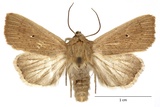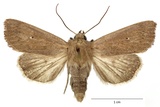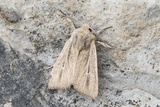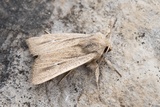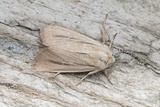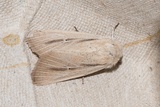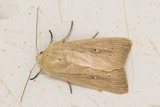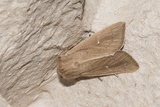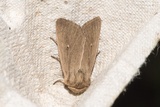Mythimna sicula (Treitschke, 1835) Species
Last modified: Nov. 20, 2025, 12:05 p.m.
A very rare and local species in Belgium. Small populations still exist in the south of the country, and elsewhere in the country as vagrants. Bound to limestone habitats.
The dark form scirpi Duponchel, 1836 used to be considered a separate species, but more recent research has shown that it is just an individual form of Mythimna sicula that occurs in different populations in different percentages.
However, because both forms are distributed somewhat differently (in some areas only one of them occurs), several regional taxa have been described (albivena, bavarica, belgiensis, dactylidis, montium, etc.), which further dilute the picture, and because the stages of development are not yet sufficiently known, further investigations (e.g. DNA taxonomy) are desirable.
This species is considered Endangered according to the IUCN Red List category for Flanders 2023.
Details
- Classification
- Family: Noctuidae > Subfamily: Hadeninae > Tribus: Hadenini > Genus: Mythimna > Subgenus: Sablia > Species: Mythimna sicula
- Vernacular names
- Wortelstreepgrasuil (NL), La Leucanie sicilienne (FR), Kleine Wurzelstriemen-Graseule (DE)
- Synonyms
- Mythimna scirpi (Duponchel, 1836) , Mythimna albivena (De Graslin, 1852) and Mythimna belgiensis (Derenne, 1931)
- First mention in Belgium
- Fologne E. 1862c. Notes sur quelques lépidoptères observés en Belgique. — Annales de la Société entomologique belge 6: 170–176. On page 171 (as Leucania Albivena. Grasl.. view page
- Status
-
Native
Distribution
Bionomics
Hibernates as a pupa. The adults come to light.
Flight periods
The adults fly from mid-May till July in one generation a year.
Sometimes a partial second generation occurs during August-September.
Observed on
- Substrates:
- Grasses
The larva lives probably on various species of Gramineae, but their biology is unsufficient known yet.
Habitat
It inhabits nutrient-poor grasslands.
